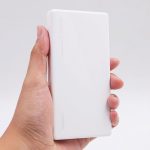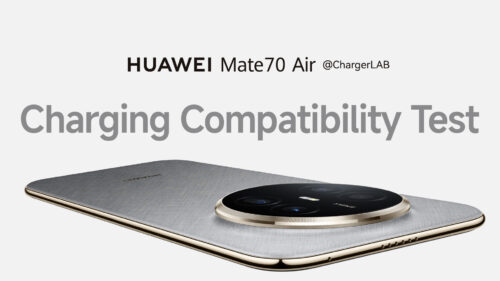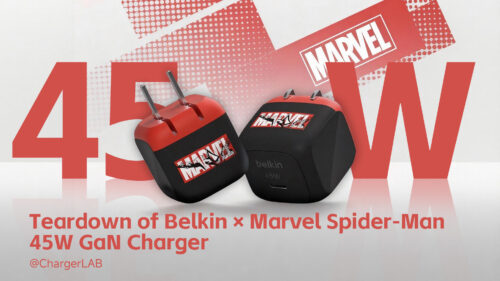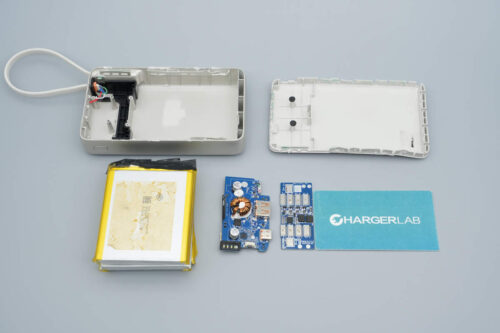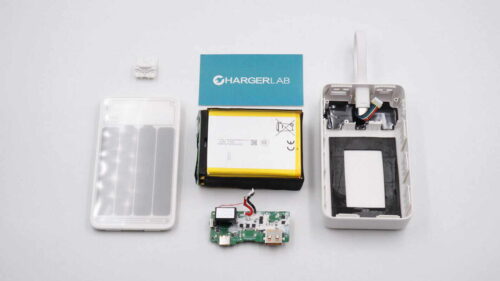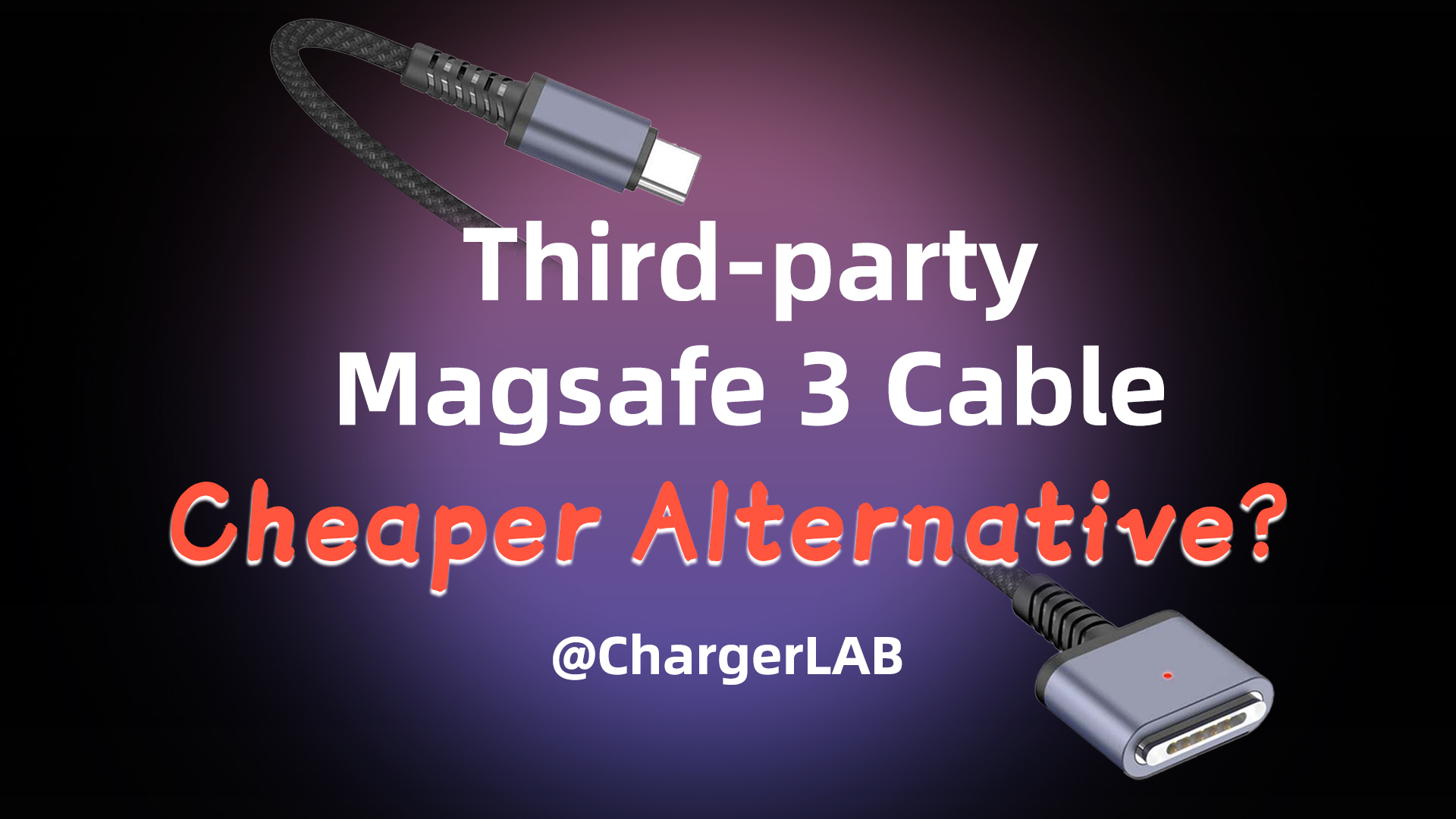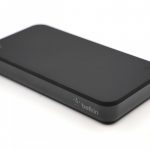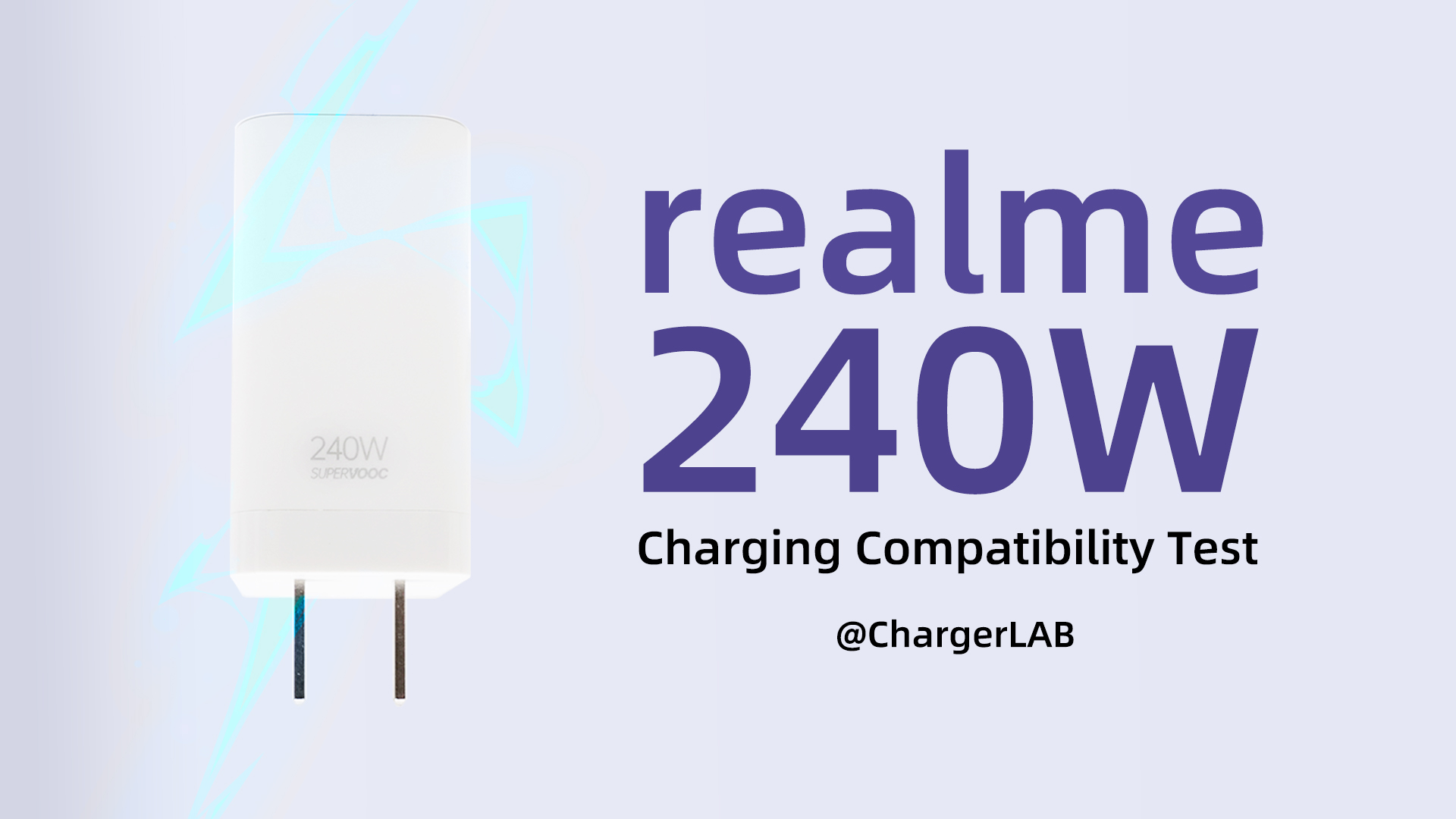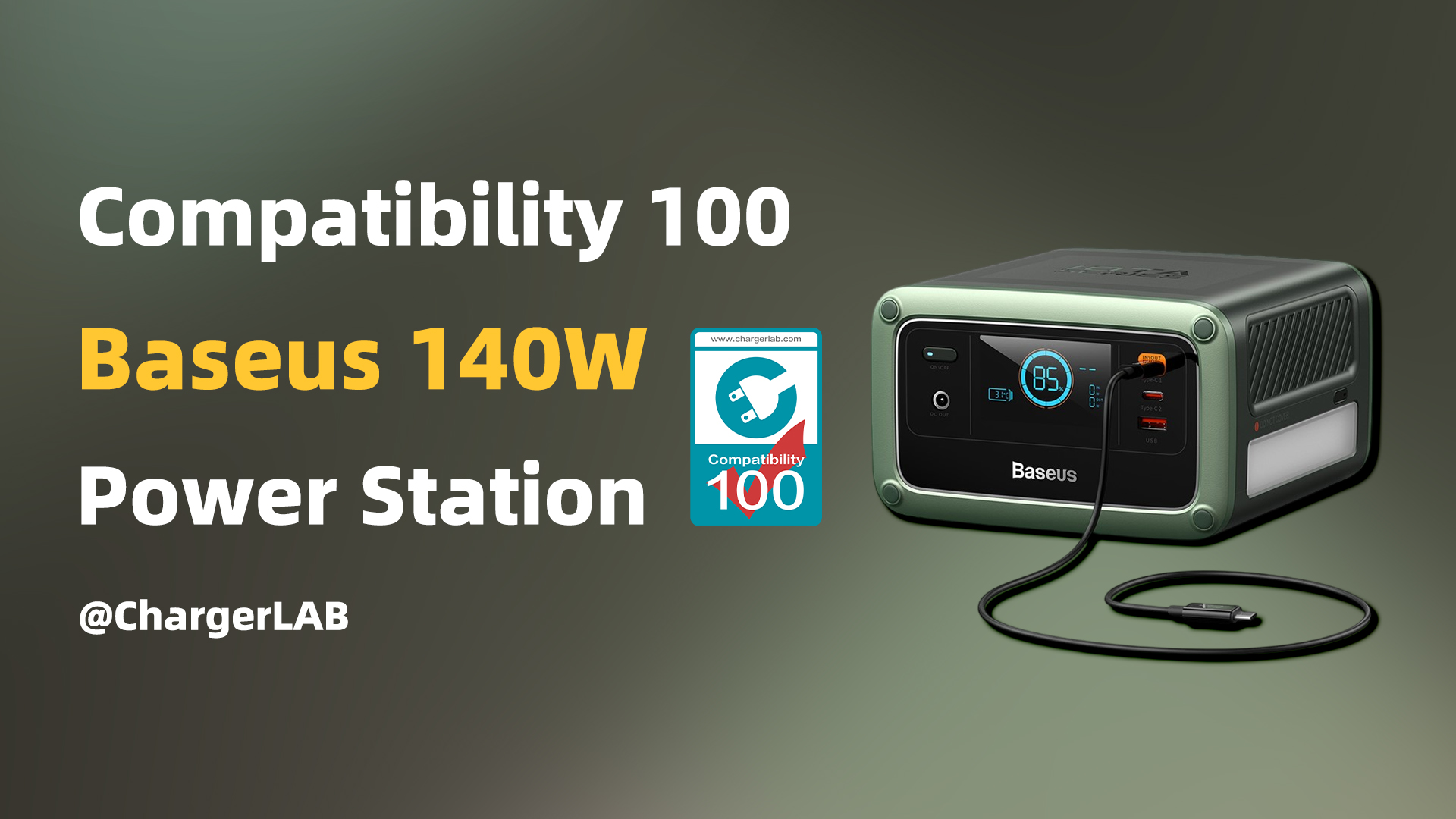Huawei unveiled the 12000mAh 40W SuperCharge Power Bank on its P30 series launch event. According to HUAWEI, the power bank can charge up to 70% of the Huawei P30 Pro in 30 minutes with the 40W SuperCharge. Its USB-C port supports two-way 40W Power Delivery charging, so you can fast charge other non-Huawei devices. The power bank is also TÜV Rheinland certified. Today, let's take an in-depth look at this flagship power bank.
I Unboxing

Minimalistic white box featuring product image.

Specifications on the back.

Model: CP12S
Battery Typical Capacity: 4020mAh×3 Battery
Rated Capacity: 3920mAh×3
Rated Capacity: 6800mAh (5V/4A)
Rated Power: 44.9Wh
Input (USB-C): 5V/9V/12V=3A, 15V=2.67A, 20V=2A, 5V=4.5A, 10V=4A, 40Wh (Max)
Output:OUT1 (USB-A): 5V/9V/12V=2A, 4.5V=5A, 5V=4.5A, 10V=4A, 40W (Max)
OUT2 (USB-C): 5V/9V/12V=3A, 15V=2.67A, 20V=2A, 5V=4.5A, 10V=4A, 40W (Max)
OUT1+OUT2: 5V=4A

The power bank is wrapped in an anti-static bag and lays inside the plastic tray with a cable.

Package contents: power bank, USB cable user manual, and warranty card.

The included USB-A to USB-C 5A cable which is capable of 5A charging.

Purple inside.

Our review unit comes in white with a rectangular shape. The surface adopts a complex coating process and feels very much like ceramic.

Huawei SuperCharge logo on the back.

A sticker covers the ports.

From left to right: the USB-A output port, USB-C input/output port, four LED indicators and a power activation button with Huawei's signature red stripe.

The LED indicator closest to the power activation button lights up in green when the power bank is in fast input or output mode.

Specifications on the side.

Diemensions: 135.4*69*15.5mm (4.06 x 2.07 x 0.47 in).


Compared to the 10000mAh CP11QM power bank and the Huawei P20 Pro, the Huawei 12000mAh 40W SuperCharge Power Bank is the smallest. The use of three Lithium Cobalt Oxide batteries enables the power bank to be thinner and lighter, as our teardown shows.

The compact size and well-thought-out design offer great hand-feel.

It weighs 224.4g (7.9 oz)
II Review
1. Charging protocols test

Using ChargerLAB Power-Z KM001C USB power tester, we know that its USB-C port supports BC 1.2, DCP, Apple 2.4A, FCP, SCP, 40W SCP, QC 3.0, and PD 3.0 protocol.

PDO information reveals the USB-C port supports quick charging output in 5V/3A, 9V/3A, 15V/2.66A, and 20V/2A.

Using ChargerLAB Power-Z KT001 USB power tester, we know that its USB-A port supports Apple 2.4A, DCP, QC 2.0, QC3.0, SCP and FCP protocol.
2. Compatibility Test
1) USB-C output
Phones

Charging the iPhone XS Max, we are getting 8.94V 2.34A 21W, under PD protocol.

Charging the iPhone XS, we are getting 8.94V 1.97A 17.64W, under PD protocol.

Charging the iPhone XR, we are getting 8.94V 2.18A 19.56W, under PD protocol.

Charging the iPhone X, we are getting 8.95V 1.91A 17.13W, under PD protocol.

Charging the Huawei P20 Pro, we are getting 8.95V 1.74A 15.63W, under PD protocol.

Charging the Huawei P10, we are getting 8.95V 1.81A 16.23W, under PD protocol.

Charging the Huawei Mate 20 Pro, we are getting 8.94V 2.18A 19.56W, under PD protocol.

Charging the Honor 8, we are getting 8.95V 1.45A 13W, under FCP protocol.

Charging the Mi9, we are getting 8.95V 1.88A 16.85W, under PD protocol.

Charging the Samsung Galaxy S10+, we are getting 8.95V 1.62A 14.55W, under PD protocol.

Charging the Sony Xperia XZ Premium, we are getting 8.95V 1.58A 14.22W, under PD protocol.

Charging the OnePlus 6T, we are getting 4.95V 1.42A 7.06W, under normal charging speed.
Tablets

Charging the iPad Pro 11-inch, we are getting 14.96V 2.25A 33.8W, under PD protocol.

Charging the iPad Pro 10.5-inch, we are getting 14.96V 2A 29.94W, under PD protocol.

Charging the iPad Air3, we are getting 14.96V 2.29A 34.37W, under PD protocol.

Charging the iPad Air2, we are getting 4.92V 2.65A 13.08W, under Apple 2.4A protocol.

Charging the iPad mini5, we are getting 14.98V 1.35A 20.35W, under PD protocol.
Laptops

Charging the Huawei Matebook 13, we are getting 19.95V 1.87A 37.44W, under PD protocol.

Charging the Xiaomi Notebook Air, we are getting 19.94V 1.61A 32.12W, under PD protocol.

Charging the Apple MacBook, we are getting 14.96V 2.01A 30.15W, under PD protocol.

Charging the MacBook Pro 13.3-inch, we are getting 19.95V 1.94A 38.81W, under PD protocol.

Summarized above.
2) USB-A output
Phones

Use the USB-A port to charge the iPhone XS Max, we are getting 4.95V 2.27A 11.41W, under Apple 2.4A protocol.

Use the USB-A port to charge the iPhone XS, we are getting 4.97V 2.35A 11.72W, under Apple 2.4A protocol.

Use the USB-A port to charge the iPhone XR, we are getting 4.98V 2.07A 10.35W, under Apple 2.4A protocol.

Use the USB-A port to charge the iPhone X, we are getting 4.98V 2.23A 11.12W, under Apple 2.4A protocol.

Use the USB-A port to charge the Huawei P20 Pro, we are getting 4.74V 4.77A 22.65W, under SCP protocol.

Use the USB-A port to charge the Huawei Mate 20 Pro, we are getting 9.66V 3.95A 38.18W, under 40W SCP protocol.

Use the USB-A port to charge the Honor 8, we are getting 8.93V 1.45A 13.03W, under FCP protocol.

Use the USB-A port to charge the Mi9, we are getting 9.39V 1.83A 17.27W, under QC protocol.

Charging the Samsung Galaxy S10+, we are getting 4.99V 1.67A 8.36W, under normal charging speed.

Charging the Sony Xperia XZ Premium, we are getting 9V 1.59A 14.31W, under QC protocol.

Charging the OnePlus 6T, we are getting 5V 1.42A 7.14W, under normal charging speed.
Tablets

Use the USB-A port to charge the iPad Pro 11-inch, we are getting 5.01V 1.41A 7.08W, under normal charging speed.

Use the USB-A port to charge the iPad Pro 10.5-inch, we are getting 4.97V 2.32A 11.56W, under Apple 2.4A protocol.

Summarized above.
3) USB-C input

USB-C chargers

Using the Apple 18W PD charger (A1695) to charge the Huawei 40W SCP power bank, we are getting 9.01V 1.78A 16.1W, under PD protocol.

Using the Baseus TC-075PQ charger to charge the Huawei 40W SCP power bank, we are getting 12.18V 1.31A 16.06W, under PD protocol.

Using the USB-C port of the Anker 33W PowerPort PD+2 charger (A2626) to charge the Huawei 40W SCP power bank, we are getting 8.95V 1.78A 16.01W, under PD protocol.

Using the Anker PowerPort Atom PD 1 charger (A2017) to charge the Huawei 40W SCP power bank, we are getting 19.88V 1.28A 25.49W, under PD protocol.

Using the Apple 30W USB PD charger (A1882) to charge the Huawei 40W SCP power bank, we are getting 20.02V 1.28A 25.64W, under PD protocol.

Using the ZMI HA832 charger to charge the Huawei 40W SCP power bank, we are getting 19.99V 1.74A 34.83W, under PD protocol.

Using the Apple 61W USB PD charger (A1947) to charge the Huawei 40W SCP power bank, we are getting 20.34V 1.74A 35.41W, under PD protocol.

Using the Lenovo LS-65WTCQCPD charger to charge the Huawei 40W SCP power bank, we are getting 19.97V 1.74A 34.82W, under PD protocol.

Using the Huawei HW-200325CP0 charger to charge the Huawei 40W SCP power bank, we are getting 19.96V 1.74A 34.81W, under PD protocol.

Using the Apple 87W USB PD charger (A1719) to charge the Huawei 40W SCP power bank, we are getting 20.34V 1.73A 35.35W, under PD protocol.
USB-A chargers

Using the Xiaomi 18W QC charger (MDY-08-ES) to charge the Huawei 40W SCP power bank, we are getting 12.57V 1.43A 18.1W, under QC protocol.

Using the ZMI 18W QC charger (HA511) to charge the Huawei 40W SCP power bank, we are getting 11.92V 1.45A 17.31W, under QC protocol.

Using the Letv 24W QC charger (EQ-24BCN) to charge the Huawei 40W SCP power bank, we are getting 12.14V 1.44A 17.59W, under QC protocol.

Using the Huawei SCP charger (HW-090200CH1) to charge the Huawei 40W SCP power bank, we are getting 4.91V 3.96A 19.46W, under SCP protocol.

Using the Huawei 40W SCP charger (HW-100400C00) to charge the Huawei 40W SCP power bank, we are getting 9.77V 3.66A 35.83W, under 40W SCP protocol.
Car chargers


Using the USB-C port of the MOMAX ASCC54-P27W12+Q3 car charger to charge the Huawei 40W SCP power bank, we are getting 11.9V 2A 23.9W, under PD protocol.

Using the USB-A port of the MOMAX ASCC54-P27W12+Q3 car charger to charge the Huawei 40W SCP power bank, we are getting 12.05V 1.98A 23.92W, under FCP protocol.

Using the USB-A port of the Huawei CP37 car charger to charge the Huawei 40W SCP power bank, we are getting 9.76V 3.68A 35.95W, under 40W SCP protocol.

The Huawei 40W SCP power bank supports dual-port simultaneous output, but the output voltage will be locked at 5V.

It also supports input and output at the same time, but the input and output voltage will be locked at 5V.
III Conclusion
With the 12000mAh 40W SuperCharge Power Bank, Huawei is pushing the boundary of what a power bank could deliver. With the use of three Lithium Cobalt Oxide batteries, the power bank is compact yet powerful. With a wide range of fast charging protocols supported, it is capable of charging your phones, tablets, and even laptops like a breeze. It is the Porsche of power banks that packs elegance with performance.
Pros:
Elegant look and compact size.
Two-way 40W PD charging.
Supports a wide range of fast charging protocols.
Cons:
Expensive.
Source: chongdiantou

